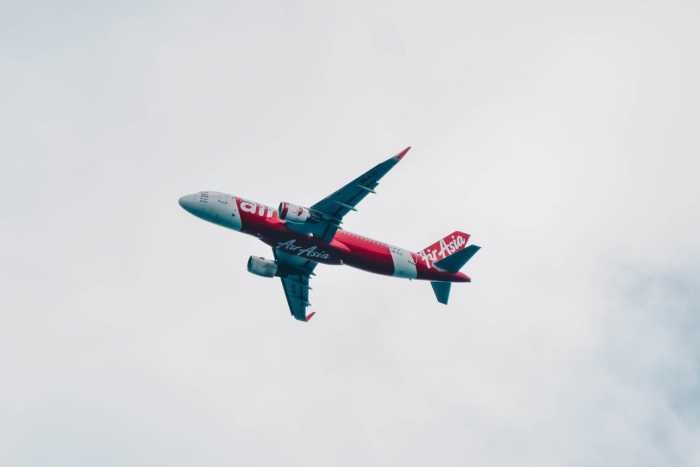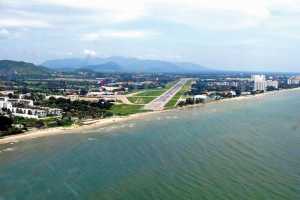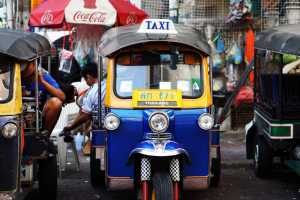
Airline Meals on the Rise
26th Jan 2011

Cheer up everyone. The much maligned airline meal is going through a revolution' But there is plenty of evidence to show why passengers always think the food is bland.
Firstly: the gastronomic revolution in which Air New Zealand is leading the way. It is due to install induction ovens on its new Boeing 777-300ER aircraft to ensure freshly prepared food. They will even have in flight wine tasting in the forward galley. (Just for the record an induction cooker uses a form of induction heating for cooking. It is chiefly distinguished from other common forms of stovetop cooking by the fact that the heat is generated directly in the cooking vessel, as opposed to being generated in the stovetop by electrical coils or burning gas.)
Italy's Alitalia has taken Italian cuisine, literally, to new heights by being awarded the 'Best Airline Cuisine' by Global Traveler magazine readers. The menu is rotated every three months and includes products authentic to particular Italian regions. Linen, tableware and personal care items designed by top Italian designers - and Italy is definitely style city when it comes to design ' is used elevating Alitalia to one of the best providers of airline meals in the world..
Asian airlines have a long history of serving much more palatable cuisine than American and some, like Cathay Pacific, can actually make eggs to order, which was almost unheard of a few short years ago. Others, like Asiana Airlines of South Korea, often voted the best in the world, offer shaved truffles on risotto and All Nippon Airlines of Japan offers an 'out of this world' Kaiseki meal, a traditional multicourse Japanese dinner. Many airlines now partner with famous restaurants or celebrity chefs for menu advice.
However, it is well established that the taste buds are less sensitive at 35,000 feet while travelling at 40 degrees below zero at Mach 1 speed or just below. So chefs and menu designers must work harder to bring out the flavor of all food. For example on Delta, a large American airline, the consulting chef included in his menu chicken breast with balsamic cipollini onions, blue cheese sauce, mascarpone mashed potatoes and cheese ravioli tossed with eggplant and artichoke caponata. Yummy!
This is all well and good, but the simple fact is that airline food must endure several obstacles not common in earth bound restaurants that often gives it that blandness passengers complain about and every comedian since the start of commercial airline flights make jokes about. (Believe it or not, the first commercial flight was a Russian 'Sikorsky Ilya Muromets' airliner in 1913).
But even in the world of humour, this is changing ' when Homer Simpson managed get a place in a first class cabin he was asked: 'Would you like one steak, or two?' to which he replied, excitedly: 'Can I have both?'
And what of the obstacles? For example, meals fit on trays that must be easily stacked, so large or vertical foods like whole chickens or lamb shanks don't work. If there is turbulence and the crew must remain in their seats, the food may sit in a reheating oven longer than planned, so it dries out easily. After being cooked in the airline catering division, the food is blast chilled to around 38 degrees Fahrenheit. The flight attendants have photos and large folders of notes and instructions on how to serve the reheated food.
'White Noise'
But what about that inexplicable blandness of airline food? Well, a recent study by Manchester University in United Kingdom found that the 'white noise' heard inside an aircraft's cabin, a random collection of sounds such as the muffled noise of aircraft engines, is capable of diminishing the taste of salt and sugar. This explains why airline food is 'improved' with extra salt, sugar and other flavourings.
The study confirmed that sound plays an important role in the perception of taste. One enterprising chef has exploited the trait in a specially designed seafood dish served to diners hooked up to iPods listening the sound of surf crashing on a beach. The study even found that sounds affected how crunchy some types of food sounded to diners, which in turn affected their perceptions of freshness and palatability.
The study involved blindfolded diners assessing the sweetness, saltiness and crunchiness and overall flavour of the food as 'white noise' was played. While louder noise reduced the reported sweetness or saltiness, it increased the measure of crunch.
Finally, how hygienic are those airline galleys? You would think with all the movement of the food from preparation to packaging to reheating to serving that a few nasty bugs would creep in along the way. In the United States they are taking no chances with the Federal Department of Aviation (FDA) cracking down on unsanitary conditions at airline caterers. The FDA inspectors had, in the past, found live cockroaches, ants and flies at a food preparation facility.
All a bit sobering... Maybe it's best to remember the wise lyrics of Stephen Sondheim, the famous American songwriter: 'anything that's gray, don't eat.'









